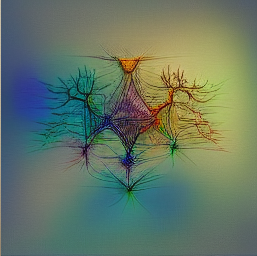In recent years, natural language processing (NLP) has witnessed significant advancements, thanks to the advancements in artificial intelligence and machine learning. One technology that has played a pivotal role in enhancing NLP is neural networks. Neural networks are computational models inspired by the human brain, designed to recognize patterns and make intelligent decisions. In the context of NLP, neural networks enable machines to understand and generate human language more effectively.
The Basics of Neural Networks
Neural networks consist of interconnected nodes called neurons, which mimic the structure and functionality of biological neurons in the human brain. These artificial neurons receive inputs, perform calculations, and transmit signals to other neurons. The strength of the connections between neurons, known as weights, determines the importance of specific inputs in the decision-making process.
How Neural Networks Improve Natural Language Processing
Neural networks have significantly contributed to the development of various NLP applications, including language translation, sentiment analysis, text classification, and chatbots. Here’s how neural networks enhance NLP:
1. Language Representation: Neural networks excel in capturing the underlying meaning and context of language. Through a process called word embedding, neural networks can represent words as numerical vectors in a high-dimensional space. This representation enables the network to understand semantic relationships between words and phrases.
2. Sentiment Analysis: Neural networks are ideal for sentiment analysis tasks, where the goal is to determine the sentiment or opinion expressed in a piece of text. By training on a large dataset of labeled sentiment examples, neural networks can learn to classify text as positive, negative, or neutral, automating the sentiment analysis process.
3. Machine Translation: Neural networks have revolutionized machine translation systems. Unlike traditional rule-based translation methods, neural networks can learn to generate translations from large quantities of parallel corpora. By modeling the relationships between words and phrases, neural networks produce more accurate and fluent translations.
4. Text Generation: Neural networks can generate human-like text by leveraging the patterns and structures discovered from vast amounts of training data. Text generation models, such as recurrent neural networks (RNNs) and transformer models, have shown impressive capabilities in generating coherent and contextually relevant text, expanding the possibilities of automated content creation.
Challenges and Future Directions
While neural networks have revolutionized NLP, several challenges remain. One major challenge is the interpretability of neural network models. Due to their complex architecture, it can be challenging to understand the inner workings and decisions made by neural networks. Researchers are actively exploring methods to improve interpretability, enabling better understanding and trust in NLP systems.
The future of neural networks in NLP looks promising. Researchers are continuously developing more advanced architectures and techniques, such as transformers and transformers-based models like BERT and GPT-3, which have shown remarkable performance in a wide range of language tasks. As more data becomes available and computing power continues to increase, the capabilities of neural networks in NLP will only continue to expand.
Conclusion
Neural networks have revolutionized the field of natural language processing by enabling machines to understand and generate human language more effectively. Through language representation, sentiment analysis, machine translation, and text generation, neural networks have enhanced the accuracy and efficiency of NLP applications. While challenges remain, ongoing research and advancements in neural network architectures continue to push the boundaries of what is possible in NLP.










Leave a Reply